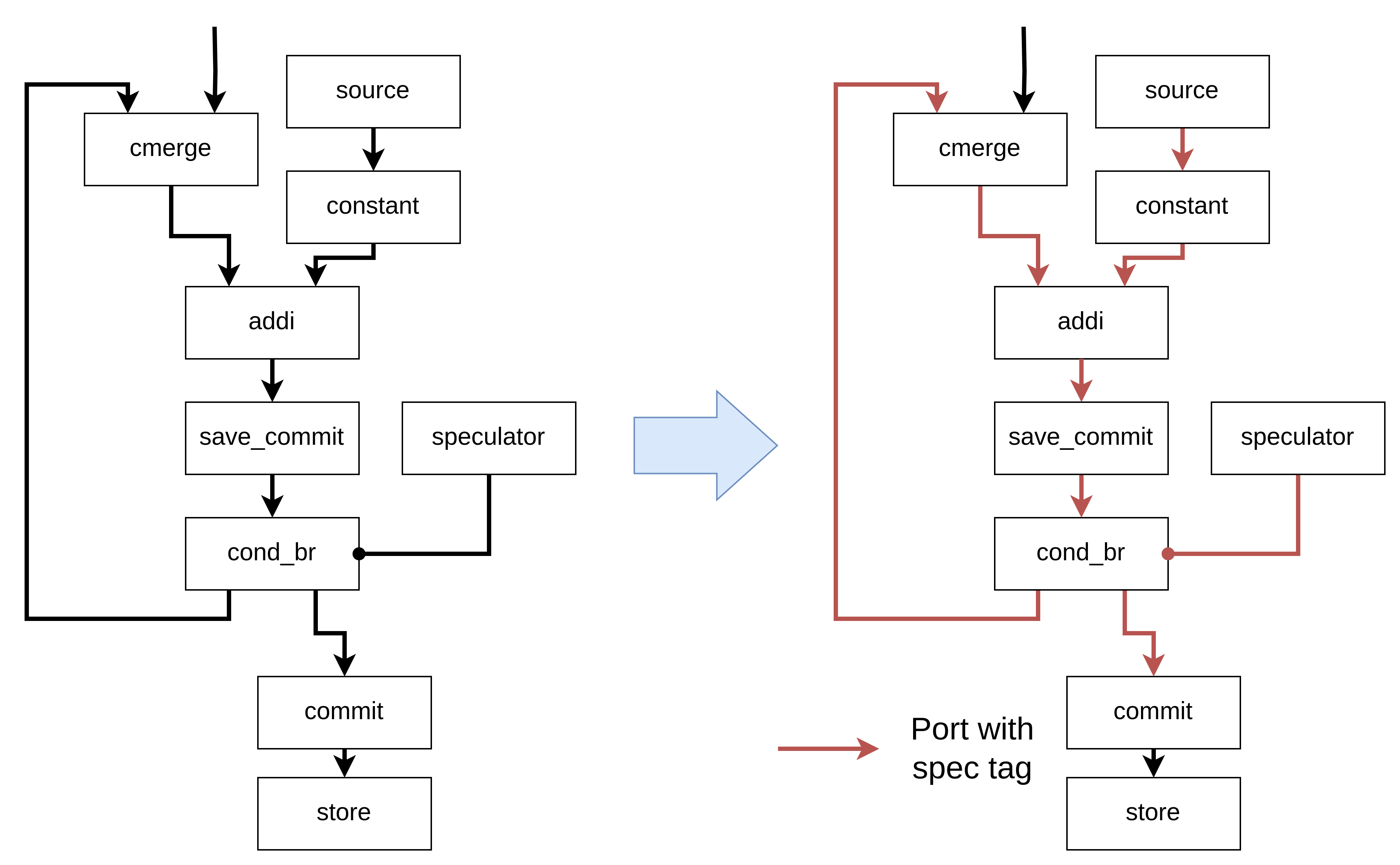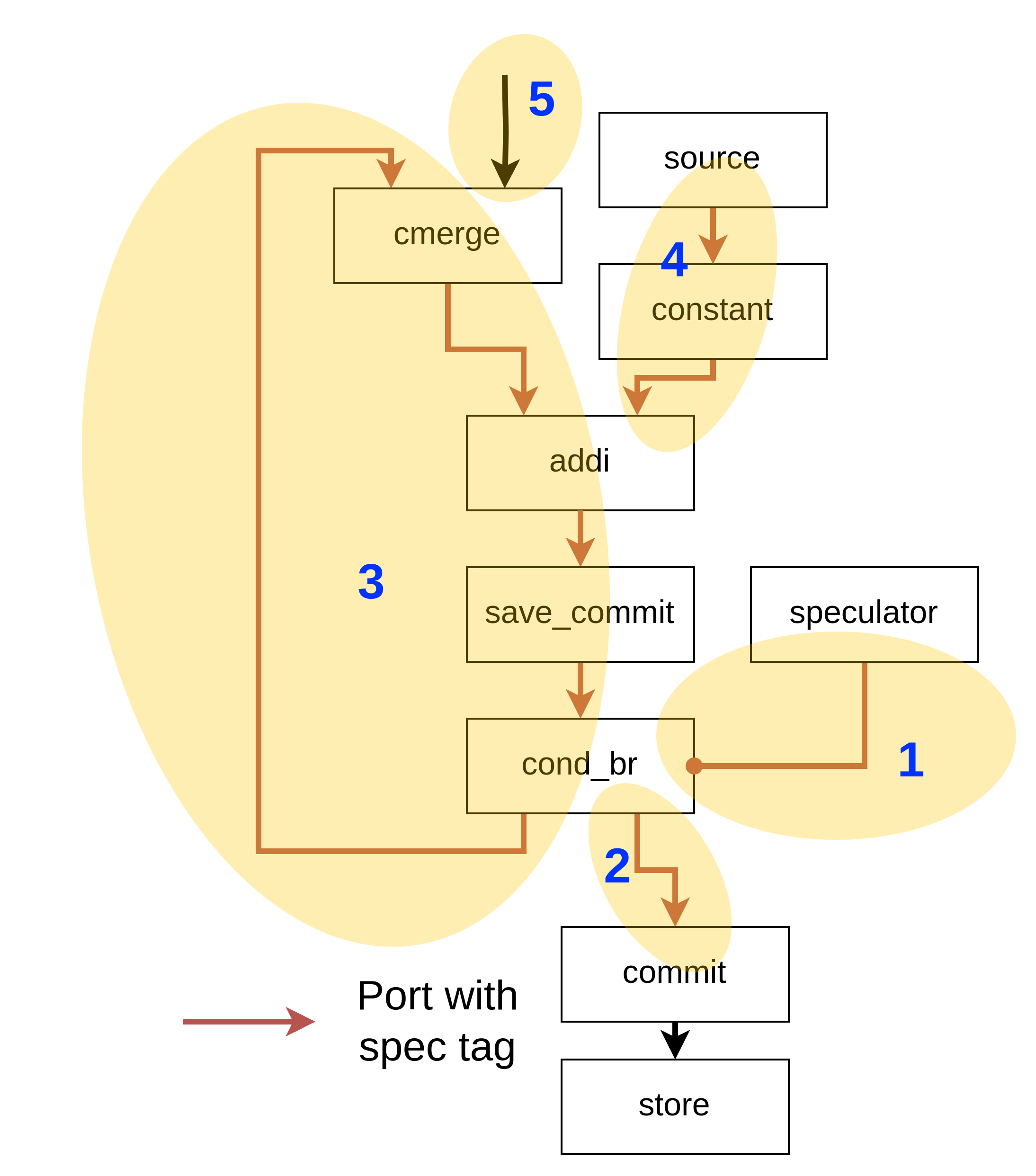Adding Spec Tags to Speculative Region
The spec tag, required for speculation, is added as an extra signal to operand/result types (e.g., ChannelType or ControlType).
Type verification ensures that circuits include extra signals like the spec tag, but it does not automatically update or infer them. Therefore, we need an explicit algorithm to do it.
This document outlines the algorithm for adding spec tags to operand/result types within a speculative region.
Implementation
The algorithm uses depth-first search (DFS) starting from the speculator, adding spec tags to each traversed operand. It performs both upstream and downstream traversal.
Consider the following example (omitting the input to the speculator for simplicity):

The algorithm follows these steps:

-
Start DFS from the speculator, first reaching
cond_br. -
Downstream traversal stops at the commit unit.
-
Another downstream traversal reaches
cmerge,addi,save_commit, and eventuallycond_bragain. Sincecond_bris already visited, traversal stops there. -
Upstream traversal is applied from
additoconstantandsource, ensuring that spec tags are added to these operands, asaddienforces consistent extra signals across all their inputs and outputs. -
Upstream traversal is skipped for
cmergeandmux, since some of their operands originate outside the speculative region. All internal edges are covered by downstream traversal.
Special Cases
The following edges are skipped:
- Edges inside the commit and save-commit control networks
- Edges leading to memory controllers
When the traversal reaches the relevant units (e.g., save_commit, commit, speculating_branch, or load), it doesn’t proceed to these edges but continues with the rest of the traversal.